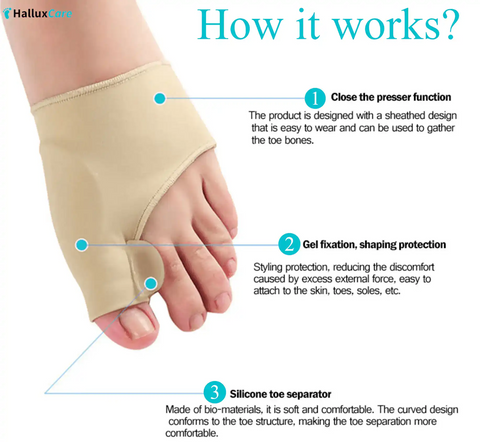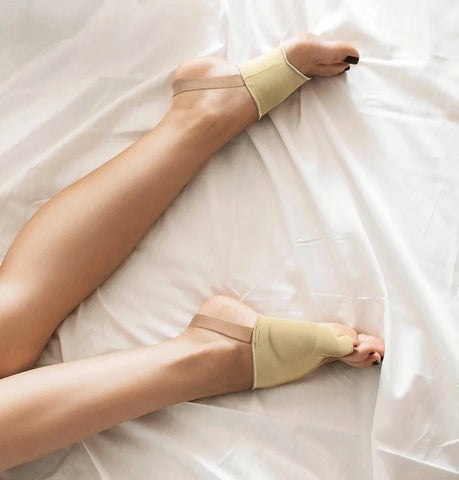Life After Bunion Surgery: Finding Your New Stride Without Losing Passion
Last Updated: April 2025 | Written by: Dr. Alyssa Chen, DPM – Board-Certified Podiatrist
If you’re an active person dealing with bunions or recovering from bunion surgery, you know how hard it is to give up the activities you love—especially running. Bunion pain relief and mobility restoration become top priorities. A recent Reddit comment in a discussion about bunion surgery for active people perfectly captures the emotional and physical journey post-surgery. The commenter shared how they transitioned from a passionate runner to an avid cyclist after surgery, while still occasionally enjoying short runs.
This highlights a common yet under-discussed challenge: adjusting your active lifestyle after bunion correction. Let's explore how others are managing this transition and how you can stay active while protecting your feet—based on expert guidance and medically-backed recovery strategies.
Finding New Ways to Stay Active After Bunion Surgery
Bunion surgery (also known as a bunionectomy) is often recommended when conservative treatments fail. According to the American College of Foot and Ankle Surgeons (ACFAS), recovery typically takes 6–12 weeks, depending on the procedure and your activity level.
Post-surgery, high-impact activities like running can put stress on the healing joint. That’s why many active individuals temporarily or permanently transition to lower-impact forms of exercise:
- Cycling: Low-impact and joint-friendly, cycling is a go-to for post-surgery recovery. It allows cardiovascular conditioning without excessive foot strain.
- Swimming: Offers a full-body workout that avoids compressive forces on the forefoot and bunion site.
- Yoga and Pilates: Help improve flexibility, balance, and foot control. According to research published in Healthcare Journal, these practices can enhance post-operative outcomes by strengthening intrinsic foot muscles.
4.9 ⭐⭐⭐⭐⭐ ( 1843 reviews )
Tips for Returning to Running or Staying Active With Bunions
Even after surgery or during flare-ups, many athletes find ways to enjoy some form of running or similar activities. Here’s what podiatrists and physical therapists often recommend:
- Start small: Begin with short 5–8 km runs on soft surfaces, like grass or a track. Monitor your symptoms and increase gradually.
- Use orthotic support: According to the American Podiatric Medical Association (APMA), custom or over-the-counter orthotics can reduce joint pressure and realign the foot.
- Alternate activities: Cross-training with cycling or swimming helps maintain fitness without repetitive foot stress.
- Choose proper footwear: Look for wide-toe box running shoes and avoid narrow or pointed designs. Brands like Altra or HOKA One One are often podiatrist-recommended.
How Orthopedic Aids Can Help Ease the Transition
Orthopedic solutions like bunion sleeves can provide the extra support you need when returning to activity. These tools are designed to:
- Reduce friction and pressure on the bunion area during movement
- Gently correct toe alignment over time
- Cushion impact during walking or running
These aids are not a cure but are widely used by athletes and recovery patients for pain management and joint stabilization.
Emotional Impact: Missing What You Love
Beyond the physical limitations, bunion surgery can also have emotional ripple effects. For athletes, sport is often tied to identity. The Reddit commenter’s story of shifting from running to cycling in the South of France isn’t just about fitness—it’s about regaining a sense of freedom and joy.
Psychologists and sports medicine professionals note that adapting to a new athletic outlet can help reduce feelings of loss and maintain mental well-being during recovery (British Journal of Sports Medicine).
Reclaiming Your Active Identity
You don’t have to stop being an athlete because of bunions. You may simply evolve. Whether it's cycling, swimming, or yoga, the key is to keep moving in a way that supports healing and longevity.
Let’s Keep the Conversation Going
Have you had to give up or adapt an activity because of bunions? How did you find your way back to movement?
Share your story in the comments—your journey could inspire someone else navigating the same challenge.
If you're looking for relief from bunion pain, consider using the Orthopedic Bunion Pain Relief & Correction Sleeve , which provides support and helps alleviate discomfort.
For additional protection, the Tailor's Bunion Bunionette Pain Relief Protection Sleeves are designed to offer comfort and protection for bunionette pain.
To nourish and soothe the skin around bunions, as well as to promote healthy hair, consider the Jamaica Black Castor Oil Soothing Oil . Known for its moisturizing and anti-inflammatory properties, it helps alleviate discomfort around bunions and supports hair growth and scalp health.
Key Takeaways
- Bunion surgery can impact your activity level, but it doesn’t mean the end of athletic pursuits.
- Low-impact sports like cycling and swimming are great post-op alternatives.
- Orthopedic aids can reduce discomfort and support recovery.
- Proper footwear and orthotics are essential for returning to activity safely.
- Emotional adjustment is part of the recovery—stay connected to your passions in new ways.
FAQs
Q: How long should I wait before running after bunion surgery?
A: Most surgeons recommend waiting 10–12 weeks, but this varies based on the type of surgery and your recovery. Always consult your podiatric surgeon for personalized guidance.
Q: Can bunions come back after surgery?
A: Yes, recurrence is possible, especially without proper footwear or foot mechanics. Preventive measures like orthotics and strength exercises are key post-recovery.
Q: Are bunion sleeves effective?
A: While they won’t permanently correct a bunion, sleeves can offer pain relief, reduce pressure, and support toe alignment during activity.
Q: Is cycling safe after bunion surgery?
A: Yes, cycling is generally a safe, low-impact activity for post-op patients and is often recommended during the later stages of recovery.




